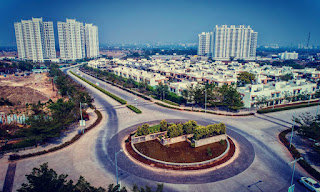Three centuries of improvement have changed seven inadequate islands into a powerful city of transcending condo blocks, pilgrim chateaus, seafront promenades and cooled shopping centers. Assuming Delhi is the seat of history and Kolkata the seat of culture, Mumbai (Bombay) is the location of film and style many driving originators are based here, where the Bollywood film machine produces a bigger number of motion pictures each year than Hollywood.
Mumbai is where Indian fantasies of wealth and glamour engage in a bizarre dance with poverty and slums, and where economic boom flirts with social collapse. More than 60% of Mumbaikers live in shantytowns, yet the city boasts some of the most expensive real estate in the country. Plans are afoot to build a futuristic new town of towering skyscrapers in the north of the city, transforming Mumbai into the Shanghai of India. From a visitor's perspective. Mumbai is easy to enjoy, and the longer you stay, the more you will.
Just once the underlying shell shock of Mumbai's mayhem dies down, can one begin to see the value in the city's charm: an abundance of Workmanship Deco and terrific provincial relics; cacophonic sanctuaries; warrens of markets; and the odd otherworldly stronghold of serenity. In Mumbai you can feast at probably the best eateries in the nation, and work off the craving rotating at ultrachic bars close by Bollywood celebrities and wannabes. With a spot of get up and go, a smidgen of adven-ture, an open wallet and a running beginning, there's no reason not to jump into the Mumbai frenzy head-first.
History:-
The seven islands that form Mumbai were home to Koli fisherfolk as far back as the 2nd century BC; Koli shanties still occupy parts of Mumbai's shoreline today. The is- lands were ruled by a succession of Hindu dynasties from the 6th century AD, invaded by Muslims in the 14th century and ceded to Portugal by the sultan of Gujarat in 1534. The British government took possession of the islands in 1665, but leased them three years later to the East India Company - for UK£10!
Koli fisherfolk have possessed the seven is-lands that structure Mumbai as far back as the second century BC. Incredibly, ruminants of this cul-ture stay crouched along the city coastline today. A progression of Hindu lines held influence over the islands from the sixth century Promotion until the Muslim Rulers of Gujarat attached the region in the fourteenth hundred years, in the long run surrendering it to Portugal in 1534. The main vital commitment the Portuguese made to the area was dedicating it Bom Bahai, prior to tossing the islands in with the endowment of Catherine of Braganza when she wedded Britain's Charles II in 1661. The English government took pos-meeting of the islands in 1665, yet rented them three years after the fact toward the East India Organization for the measly yearly lease of UK£10.
During that period, Bombay created as a significant exchanging port, and in no less than 20 years the administration of the East India Organization was moved to Bombay from Surat. Despite the fact that Bombay developed during the eighteenth 100 years, it remained disengaged from its hinter-land until the English crushed the Marathas (focal Indians who controlled quite a bit of India) and added significant segments of western India in 1818.
The fort walls were in 18 and massive building works transformed t city in grand colonial style. When Bomb took over as the principal supplier of cott to Britain during the American Civil W the population soared and trade boomed money flooded into the city.
A major player in the independence move- ment, Bombay hosted the first Indian Na- tional Congress in 1885, and the Quit India campaign was launched here in 1942 by frequent visitor Mahatma Gandhi. The city became capital of the Bombay presidency after Independence, but in 1960 Maharashtra and Gujarat were divided along linguistic lines - and Bombay became the capital of Maharashtra.
In 1996 the city's name was authoritatively different to Mumbai, the first Marathi name got from the goddess Mumba who was loved by the early Koli resi-scratches. The Shiv Sena's impact has since seen the names of numerous roads and public structures transformed from their pilgrim names. The air terminals, Victoria End and Ruler of Ridges Historical center have all been renamed after Chhatrapati Shivaji, the incomparable Maratha pioneer, albeit the English names of these and many significant roads are still in well known nearby use.
In 1996 the city officially changed its name to Mumbai, the original Marathi name derived from the goddess Mumba, who was worshipped by the early Koli residents.
ORIENTATION
Mumbai is an island connected by bridges to the mainland. The principal part of Mumbai is concentrated at the southern end of the island known as south Mumbai. The southernmost peninsula is Colaba, the travellers' nerve centre. Directly north of Colaba is the busy commercial area known as the Fort, where the old British fort once stood. It's bordered on the west by a series of interconnected grassed areas known as maidans. The island's eastern seaboard is dominated by the city's off-limits naval docks. Further north, across Mahim Creek are the suburbs of Greater Mumbai and the international and domestic airports. Many of Mumbai's best restaurants and night spots can be found here, particu- larly in the upmarket suburbs of Bandra and Juhu.


.jpeg)






